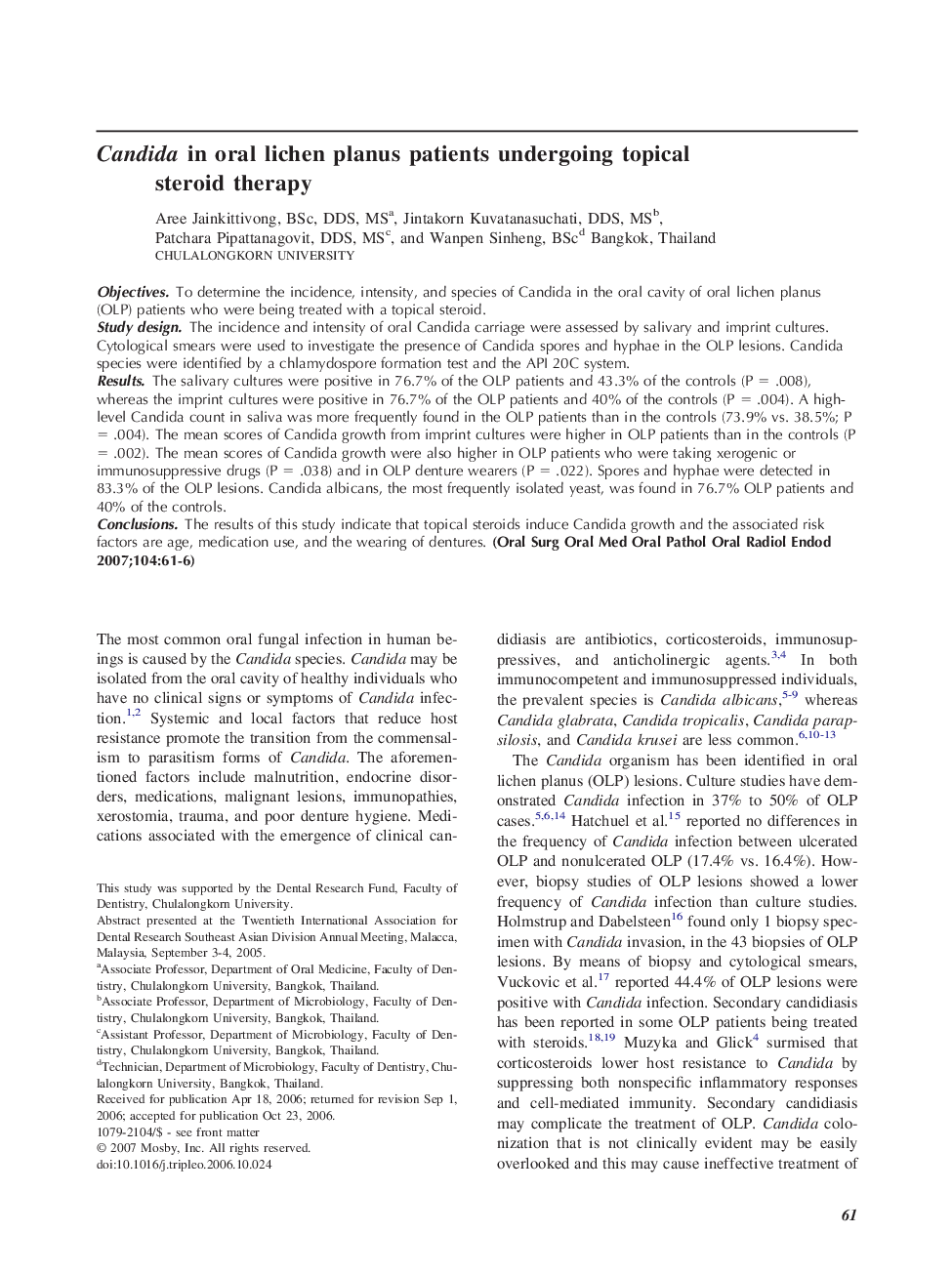| Article ID | Journal | Published Year | Pages | File Type |
|---|---|---|---|---|
| 3169166 | Oral Surgery, Oral Medicine, Oral Pathology, Oral Radiology, and Endodontology | 2007 | 6 Pages |
ObjectivesTo determine the incidence, intensity, and species of Candida in the oral cavity of oral lichen planus (OLP) patients who were being treated with a topical steroid.Study designThe incidence and intensity of oral Candida carriage were assessed by salivary and imprint cultures. Cytological smears were used to investigate the presence of Candida spores and hyphae in the OLP lesions. Candida species were identified by a chlamydospore formation test and the API 20C system.ResultsThe salivary cultures were positive in 76.7% of the OLP patients and 43.3% of the controls (P = .008), whereas the imprint cultures were positive in 76.7% of the OLP patients and 40% of the controls (P = .004). A high-level Candida count in saliva was more frequently found in the OLP patients than in the controls (73.9% vs. 38.5%; P = .004). The mean scores of Candida growth from imprint cultures were higher in OLP patients than in the controls (P = .002). The mean scores of Candida growth were also higher in OLP patients who were taking xerogenic or immunosuppressive drugs (P = .038) and in OLP denture wearers (P = .022). Spores and hyphae were detected in 83.3% of the OLP lesions. Candida albicans, the most frequently isolated yeast, was found in 76.7% OLP patients and 40% of the controls.ConclusionsThe results of this study indicate that topical steroids induce Candida growth and the associated risk factors are age, medication use, and the wearing of dentures.
